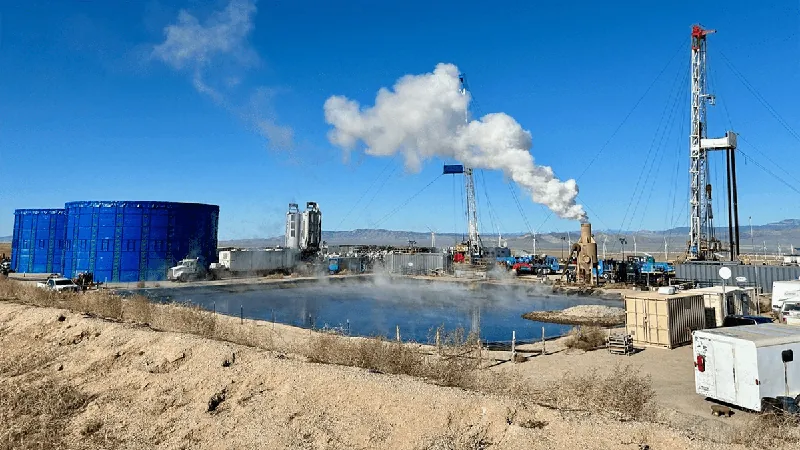
Comprehensive Guidelines to Safeguard Against Induced Seismicity Risks in Enhanced Geothermal Systems
2025-01-07
Author: Yu
Understanding Enhanced Geothermal Systems
EGS involves injecting high-pressure fluids into hot, dry rock formations to create artificial reservoirs. This process enhances the permeability of the rocks, enabling them to conduct heat more effectively. Once the heat is extracted, it can be used for electricity generation or direct heating for homes and industries. This revolutionary method not only opens up vast energy resources but also holds the potential to significantly reduce greenhouse gas emissions.
However, the stimulation of underground reservoirs can lead to induced seismicity—small earthquakes resulting from the changes in pressure within the Earth’s crust. While minor earthquakes are a normal outcome in EGS operations, they can escalate and pose risks to nearby communities if not managed properly.
Sizing Up the Seismic Risks
The seismic risks associated with EGS primarily arise during fluid injection, which can inadvertently trigger larger earthquakes by interacting with pre-existing fault lines. In some regions, this has led to opposition against geothermal projects, claiming the safety of local residents could be compromised.
An engaging new article in "Reviews of Geophysics" offers a roadmap for managing these risks through a well-defined framework known as the Induced Seismicity Risk Management Framework (ISRMF). This framework aims to equip EGS operators and regulatory bodies with a comprehensive set of guidelines for safe operations, ensuring community safety remains paramount.
Key Components of the Risk Management Framework
The ISRMF is structured around six core modules designed to provide thorough oversight throughout the lifecycle of an EGS project:
1. **Seismic Risk Pre-Screening**: A preliminary evaluation to estimate seismic risks prior to operations.
2. **Data Collection and Research**: Continuous accumulation of data to refine earthquake risk assessments.
3. **Communication and Outreach**: Engaging with the public to boost understanding and trust regarding EGS operations.
4. **Comprehensive Hazard Assessment**: An in-depth analysis of potential seismic hazards.
5. **Technical Mitigation Measures**: Implementation of strategies to manage risks, including real-time monitoring systems.
6. **Financial Mitigation Measures**: Financial strategies that ensure preparedness for unforeseen circumstances.
The likelihood of inducing seismic events is high during the stimulation phase, making proactive measures critical. The implementation of a traffic light protocol is advised, whereby operations can be modified or halted based on real-time seismic data to mitigate risks effectively.
Future Directions for EGS and Seismic Risk Management
Although guidelines for seismic risk management in EGS are now clearer, there remain numerous questions that require further exploration. The efficacy of risk mitigation strategies, particularly in the transition periods indicated by "yellow-lights," still needs validation. Moreover, understanding the seismic behavior following operational cessation is crucial for ensuring long-term community safety.
In conclusion, as the push towards greener energy sources like enhanced geothermal systems intensifies, careful consideration of the associated seismic risks is imperative. Ongoing collaboration between EGS operators, regulatory bodies, and communities will foster a responsible approach to harnessing geothermal energy while safeguarding public safety. The insights provided by the ISRMF serve as a beacon for all stakeholders involved, paving the way to a more energy-secure future.
Stay tuned for more updates on advancements in geothermal technology and its impact on our fight against climate change!




 Brasil (PT)
Brasil (PT)
 Canada (EN)
Canada (EN)
 Chile (ES)
Chile (ES)
 Česko (CS)
Česko (CS)
 대한민국 (KO)
대한민국 (KO)
 España (ES)
España (ES)
 France (FR)
France (FR)
 Hong Kong (EN)
Hong Kong (EN)
 Italia (IT)
Italia (IT)
 日本 (JA)
日本 (JA)
 Magyarország (HU)
Magyarország (HU)
 Norge (NO)
Norge (NO)
 Polska (PL)
Polska (PL)
 Schweiz (DE)
Schweiz (DE)
 Singapore (EN)
Singapore (EN)
 Sverige (SV)
Sverige (SV)
 Suomi (FI)
Suomi (FI)
 Türkiye (TR)
Türkiye (TR)
 الإمارات العربية المتحدة (AR)
الإمارات العربية المتحدة (AR)